Catalogue and magic properties of the stone -->rus
Amethyst

 Description characteristic of the mineral.
Description characteristic of the mineral.
Variety of quartz (oxide of silicon) colouring of which depends on including of different elements from lilac to darkly-violet. In the bright sunshine Amethyst can gradually lose the color and become yellow-greyish, but it is possible to recover the repeated treatment transparent and strengthen his color. His colouring is caused violation of crystalline lattice and included in it of trivalent iron Fe. As well as Quartz Rock Crystal, can have a form of crystals with 6 verges. Amethyst can be entangled with fluorite, but Fluorite more soft Amethyst, Fluorite can be scratched slightly glass, and Amethyst dints on glass. At the hours-long burning at a temperature near 500oC grows into a citrine (yellow variety of quartz) and becomes yellow-brown.
Amethyst Quartz is the natural opaque Amethyst crystal with milky-white bottom layer substratum. Amethysts can additionally paint over dyes for giving by him more violet tint and delete of local yellowness. Therefore such Amethyst needs to be carefully washed in soapy solution.
Natural Amethyst slightly changes the color depending on illumination, temperature and corner of turn of stone. Therefore this stone loved navigators and travelers. Trusted that at a very attentive supervision it is possible on the tint of stone to prognosticate a weather: if stone slightly darken - there will be a rain, if he is light - a weather will be clear.
Amethyst is violet different intensity and sometimes with a rose or reddish tint variety of quartz and is most valuable in the group of quartz. Amethyst - favourite stone servants of church. Icons, altars, pectoral crosses and panagias, were decorated them. Presently Amethyst is used as material for cutting of insertions for rings, ear-rings, beads etc. Druses of shallow crystals of Amethyst, geodes and amygdales apply as souvenir-carpentry stone.
Colouring in crystals is necessarily distributed unevenly: the pyramids of growth of verges of positive rhombohedron (apexes of crystals) are painted in a purple-violet color, negative (bottom base of crystal) - colourless or poorly violet, hexagonal prism - colourless or smoke-coloured. It is related to uneven populated of elementary cell of quartz the centers of Amethyst of colouring and causes the phenomenon of anomalous pleochroism. In nature Amethyst be found as prolate and sceptre crystals, in twins, druses, brushes, multibranch joint and parallel-pole laminated aggregates. As a rule, length of crystals from 5 to 100 mm. Sometimes there are enough large crystals.
The mine deposits of Amethyst are related to pegmatites, hydrothermal educations and mineral mine deposits. In the CIS they are known on Arctic Ural, Middle Ural, in Central Asia (Sel'bur and other), Yakutia (Deception), on a northeast within the limits of the Omolonskogo middle array (Kedonskoe). Amethyst druses is known in an unique mine deposit Cape Ship on the coast of Kandalakshskogo of bay of the White sea, in Armenia (Idzhevan), Azerbaijan (Dashkesan), East Siberia. Abroad Amethyst is obtained in Brazil, Uruguay, India, Sri Lanka, USA (states of Nativeium, Arizona), Zimbabwe (Mvakambiko - one of the largest mine deposits in the world), on Madagascar, in Australia and other
Amethysts has insidious property: their colors, deep and living by the sun light, at electricity by sight fade and dim. Only especially valuable Amethysts have some juicy more red tint. It is exceptionally daily stone, though burning down on to light. The darkest and beautiful Amethysts arose up in cracks, dissecting granit arrays: druses and Druses of intense-violet crystals of bipyramidal look grow in gapings rimous emptinesses, covering their walls. Amethysts appear from low temperature solutions. Overhead part of lava cloak is gap-filling the crystallize bubbles of gases and steams - agate and chalcedonic amygdales. Middles of these amygdales are geodes - covered the crystals of quartz mountain crystal and Amethyst. In 1900 in Brazil a giant cavity was unsealed is a cave long 10 m and breadthways 5 m, all of walls of which from within sparkled the large and dark crystals of Amethyst.
Amethyst druses are little crystals which are so closely pinned against each other, that their acute-angle heads stick out only and the triangles of verges gleam. More frequent than all such druses arise up wherein the layer of mountain rocks, will say sandstones, is broken the network of cracks. There are emit solutions on these cracks. Lixiviating a silica from surrounding rocks, these barely warm solutions are besieged in the cracks of Quartz Rock Crystal and Amethyst, covering emptinesses the carpet of peaked shallow crystals. Sometimes the area of brushes of Amethyst arrives at ten and hundreds of square centimetres.
Synthetic Amethysts very clean, they can insignificantly change colouring at daily and artificial illumination (to imitate Alexandrite). Prices on Amethysts, as well as on other jeweller stone, are very inconstant. Enough low presently prices it is possible on Amethysts, probably, to explain a generous amount at the market of wonderful synthetic Amethysts, practically not distinctive most gemmology methods from natural. Prices on natural and synthetic Amethysts today roughly identical.
Magic properties of stone.
Amethyst was always considered one of the mightiest talismans. Stone of spirituality. Stone from intoxication. In all of ages Amethyst was considered powerful amulet charm talisman from a wicked fate, and from the womanish heart of stone banished unshared or old, nagging love, opening new possibilities. In antiquity from Amethyst did cups and bowls, guarding from intoxication, and also from poisons. As a talisman stone attracts the favour of rulers, does a people vigilant, instrumental in growth of his prudence. If to cut out the images of moon and sun on Amethyst, it is possible to get one of strongest amulet charm talisman from witchcraft, black art, spoilages et cetera Often Amethyst, especially dark tones, used as a talisman invincible soldiers, it gave a confidence and bravery, guarded from rash actions and haste. In point-of-sale businesses stone gave a proprietor success, instrumental in advantageous trade and guarded his property.
It very beautiful, durable scalene stone, which was known already in Ancient Egypt. Warning of Sumerian priests is known: Amethyst is able to cause love to giving even in case that an accepting gift to it was in love in other. In Rome Amethyst named the "blessed stone" which brought success, rest and blessing, settled nerves and reconcile discords. Finger-rings with Amethyst carried the first christians, later Amethysts shine on the hands of higher clericals. At dedication in dignity of cardinal to devoted a ring was handed with Amethyst, why in the catholic countries of stone named episcopal, pastor, and on Russia by a bishop. In middle ages he was named a "Apostolic Pope stone" (Patriarch of Rome apostle Vatican, Spain, EU). Amethyst personifies a candidness and sincerity, safety and pacified, and on the east givings is happiness, prosperity and optimism. Legend about deinebriating influence of Amethyst is explained simply: if to drink wine from Amethyst of cup, nobody is visible, as far as it is water-diluted.
It got the name in honour a wonderful nymph Amethys, to which god of wine and gladness be inflamed sudden passion. But a wonderful nymph rejected his solicitations, as loved a shepherd Sirikosa - beautiful musician and favourite Apollone (Apollo). Offended Dionis (Artemis) pursued after it through meadows and forests, and a nymph, escaping, called a goddess Artemide (Artemis) for help. As soon as Dionis (Dionisiy) made an effort conclude a nymph in the embrace, a goddess converted it into glimmered purple brilliance of stone, Amethyst adopted in honour it.

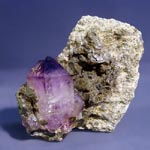
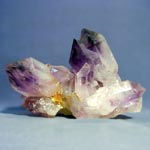
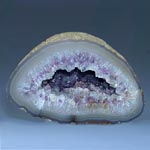
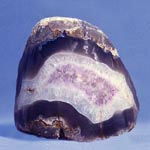
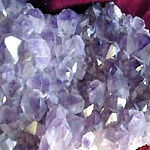
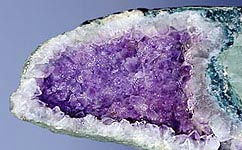
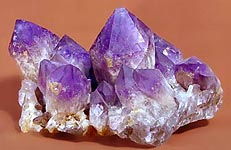

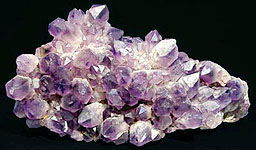
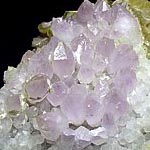
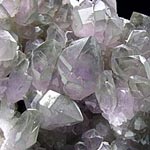

Poisonous and radioactive risky hazardous cargo stone and minerals
** - are poisonous stone and minerals (mandatory verification is in the chemical analysis laboratory + on toxicity)
** - are radioactive stone and minerals (mandatory verification on a regular dosimeter + prohibition on the opened sales in the case of radio-activity over 24 milliroentgens / hour + additional measures of protection of people)
All of rare stone are subject obligatory verification on a regular dosimeter on the possible level of radiation and in a chemical laboratory on absence default of poisonous and evaporating components, dangerous for a human people and environment nature
- Free download article Very dangerous and potentially dangerous stone and minerals are in Medical stone therapeutics, with pictures, 2010 year, format of PDF, 2.80 Mb (Presentation from scientific of author K.305 of pictures of very dangerous and potentially dangerous natural stone and minerals which on a bad motive or criminal indifference can be illegally used in criminal and "underground" "Medical stone therapeutics"). Rus langv.
A catalogue of stone is all of stone in alphabetical order
- Signs of travelling traffic lane markings - to transportation and marking of dangerous load Policy Rules
- Rules of Road Transportation of Especially Dangerous Loads, Hazardous cargo commodity, signs index plate
